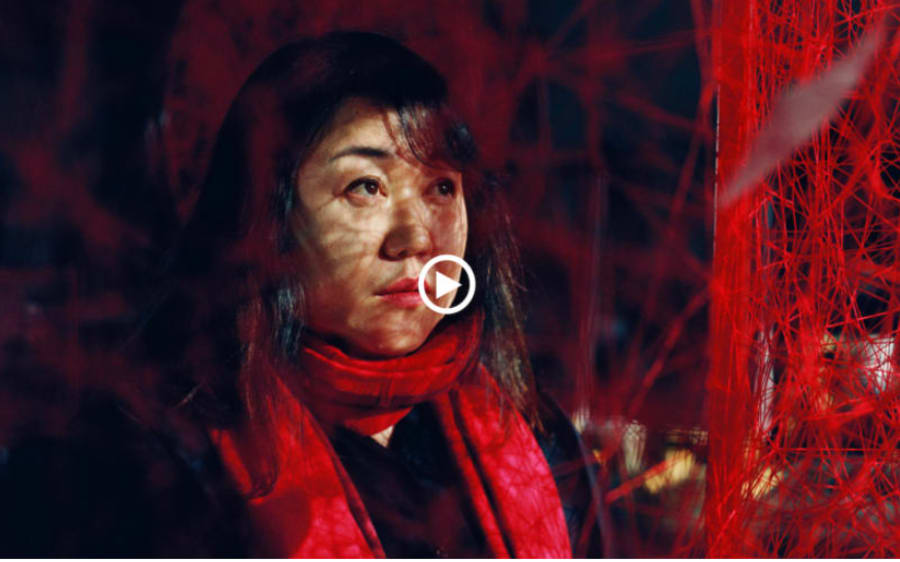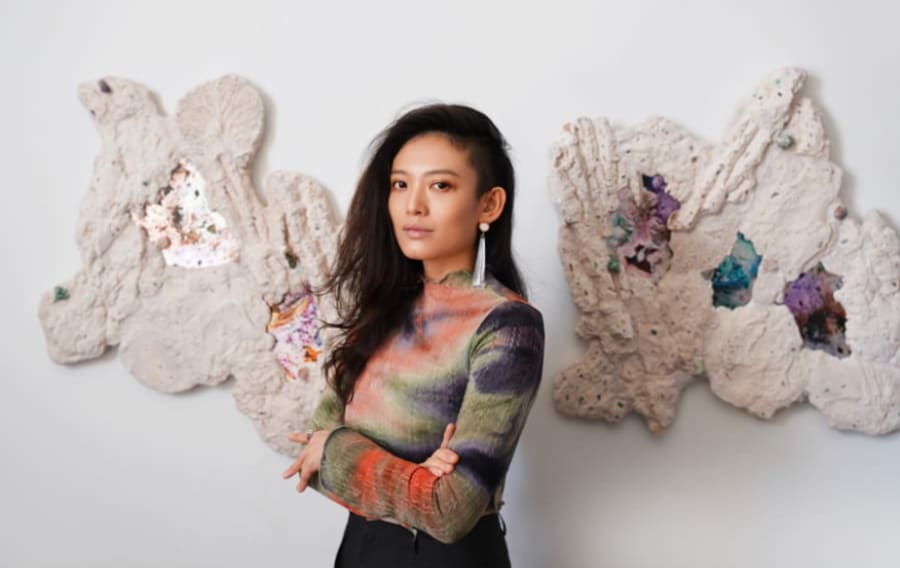Bruce Nauman’s influence on contemporary art cannot be understated. Many of the forms, languages, concepts, and media that have become familiar today can be traced back to the American artist’s practice over the past 60 years: from film, neons, site-specific installations, sound, text, and video to the repetition of everyday actions and the reappropriation of one’s own body. Nauman has been a true pioneer.
Though singular in its approach, his art is intimately connected to the legacy of the European Surrealist and Dadaist movements of the early 20th century. Surrealism critiqued the dullness, rigidity, and conventionality of the bourgeois lifestyle through absurd images; Dada disrupted the stability and certainty of artistic language. Like the Surrealists and Dadaists, Nauman has maintained a keen interest in the chaos and contradictions of human nature from his early work onwards. In the late 1960s, he completed a series of performance works, including Bouncing in the Corner, No. 1 (1968), Lip Sync (1969), and Walk with Contrapposto (1968), using his own body as a medium. Most of them involved repetitive actions divorced from any context – or fragments borrowed from everyday conversations. In these works, the use of enclosed spaces and repetitive acts is also reminiscent of Samuel Beckett’s absurdist theater, in which the plot proliferates and dissolves in a closed-loop circuit. Through such an intensive process of repetition, Nauman renders the otherwise unnoticeable aspects of everyday life recognizable and, at times, utterly unbearable.
Dadaism’s interest in the paradoxes and chaos of language is also visible in Nauman’s prolonged exploration of text and wordplay. Citing the revelations of the 20th-century philosopher Ludwig Wittgenstein in his ‘language games,’ Nauman acknowledges that the essence of language lies not only in information but also in activity. Word games are expressions of life itself, in all its paradoxes. This is evident in his early neon light work The True Artist Helps the World by Revealing Mystic Truths (1967). Is this grand statement an emphasis or a mockery? For the viewer, doubt always lingers. In his subsequent works, such as Thank You (1992), Nauman incorporated sound and imagery, revealing the dogmatism of text and illustrating the complex relationship between the form and meaning of linguistic symbols. Through his continuous and rigorous exploration of artistic materials and elements, Nauman persistently questions the human condition and its articulation through language.
While Nauman’s artistic career unfolded against the backdrop of several major late-20th-century movements, including Minimalism and Conceptual Art, he stayed away from them all. His use of the body and performance clashes with the perceived rationality and clean aesthetics of Minimalism; the way he incorporated found objects into his work also diverges from the irreverence of Pop Art and contrasts with Conceptual Art’s tendency to prioritize ideas over aesthetics. Yet it is impossible to bypass his lasting influence.
Nauman’s constant pursuit of disintegrating artistic norms, definitions, styles, and categories makes the study of his oeuvre especially meaningful now. In contrast to the era when Nauman was first active, art today has become highly commodified, driven by a necessity for unambiguous styling and marketing. Too often it is a stylized, commercialized entity that endlessly disseminates itself on social media, yet fails to inspire trust. In the competition for the views and likes that dictate capitalist pageantry, art also tends to excessively focus on immersive experiences that serve no specific purpose, turning itself into a spectacle. Worse, in a society that perceives itself through digital and information technologies, direct contact with physicality and tangible reality are becoming increasingly scarce. This change not only dulls the senses, but also severely diminishes the experiences of art and art-making.
Nauman’s work, in contrast, manages to be rooted in contemporary life while questioning and experimenting with the human condition and linguistic behaviors. By maintaining a sensitivity and perceptivity towards emotions and the surrounding environment, the artist imbues time and space with a sense of poetry. This in turn prompts us to critically engage with everyday life, indisputably demonstrating the importance of art to connect with the present moment, with physical contact and tangible experiences. Only through this connectivity can art create new forms of consciousness. Given this perspective, the artist’s seemingly endless loops are open-ended reminders that a sense of self offers perpetual possibility as much as the capacity for criticality in continuing to meet the moment as contemporary life endlessly changes and evolves.
Pi Li is the head of art at Tai Kwun Contemporary, Hong Kong.
Caption for top image: Bruce Nauman, Animal Pyramid (detail), 1989. © 2024 Bruce Nauman / Artists Rights Society (ARS), New York. Photograph by Maris Hutchinson. Courtesy of David Zwirner and Tai Kwun.
Published on May 7, 2024.


